Archivo de noticias y eventos
101 - 150 de un total de 1805
También puede acceder a la lista de noticias publicadas en los medios relacionadas con el Instituto de Astrofísica de Andalucía - CSIC.
Pages
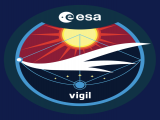
|
12/03/2024 - 15/03/2024
https://form.jotform.com/240521968228359 Granada |

|
12/03/2024
Espacio 3 organiza el primer “Micro Abierto” de Ciencia de Granada en la Sala Aliatar “Abierto por defecto, y ven a contar tus movidas” tendrá la idea de “Libertad” como hilo conductor del proyecto de Ciencias y Artes Escénicas que incorpora nuevos formatos en su cita de marzo |
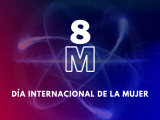
|
04/03/2024
8M: Día Internacional de la Mujer 2024 El Instituto de Astrofísica de Andalucía participa en la celebración del Día Internacional de la Mujer celebrando la mesa redonda "Vocaciones en áreas STEM: El caso de la Física" y participando en la organización del II Encuentro Científicas y Empresarias de Granada |
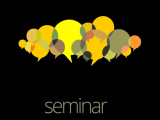
|
11/07/2024 - 12:30
Dust in protoplanetary disks, (still) that great unknown Planetary systems are a side effect in the formation of a star. Planets are believed to be just simply the last remaining of dusty circumstellar disks which is formed around the protostar at very early stages. Thus, understanding how planets are formed requires to understand how dust evolve in these disks. It is less than ten years that we have the possibility of mapping the dust distribution in protoplanetary disks with great detail with... Carlos Carrasco González |

|
14/05/2024 - 12:30
New possibilities for atmospheric analysis with Monte Carlo In recent years, significant advancements have been made in scientific computing utilizing the Monte Carlo method, particularly at the intersection of two key communities: the heat transfer community and the computer graphics community. The first breakthrough is that the computation time required to solve radiative transfer becomes invariant, whether the ground is described by a single building or thousands of them, whether the 3D clouds are... Dr. Yannis Inouk Nyffenegger Péré |

|
30/04/2024 - 12:30
The art of astrophysical measurements: An elementary lecture on photon counting and S/N Have you ever dared to understand how many photons are detected by your camera when you are pointing the telescope to the sky? Is the action of the spectrograph fully understood when analyzing those photons? Do typical image formation rules hold when studying the polarization of light? All these are a few examples of questions addressed by researchers when designing instruments, which are later constrained by technological capabilities. This... Dr. José Carlos del Toro Iniesta |

|
11/04/2024 - 12:30
LP791-18d as a case study for outgassing rocky exoplanets Over the past three decades, the discovery of over five thousand exoplanets has opened avenues for atmospheric characterization, now feasible for a select subset through spectroscopic observations paired with Bayesian inference techniques. These exoplanetary atmospheres serve as crucial windows into planetary formation and evolutionary histories. Achieving accurate interpretations demands a comprehensive approach, advancing theory and modeling... Dr. Leonardos Gkouvelis |

|
04/04/2024 - 12:30
The Earthbound Fate of Meteor Phenomena Understanding meteor phenomena is essential for promptly and effectively recovering meteorites, predicting meteor showers, studying atmospheric properties, and assessing the threat posed by space objects to both in-orbit and ground-based infrastructure. By observing and interpreting meteor phenomena, we can predict impact consequences and efficiently locate and identify surviving meteorite fragments on the ground. Through dimensional analysis,... Dr. Maria Gritsevich |
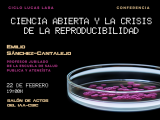
|
22/02/2024 - 19:00
Ciencia abierta y la crisis de la reproducibilidad La ciencia es una fantástica y gigantesca empresa humana en la que se estima que están implicadas mas de nueve millones de personas y en la que actualmente se invierte en el mundo más de un billón y medio de euros anualmente. El método científico es el instrumento que ha caracterizado a la ciencia para alcanzar su objetivo de conocer y comprender el mundo natural que nos rodea. Emilio Sánchez-Cantalejo |
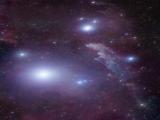
|
04/03/2024 - 05/03/2024
https://indico.iaa.csic.es/event/14/ Granada |

|
25/04/2024 - 12:30
Artificial Intelligence in Service of Galaxy Evolution Research: A Personal Journey In this seminar, I will present my personal exploration of the application of artificial intelligence in the study of galaxy evolution. Since the early 2010s, the fields of machine learning and deep learning have undergone unprecedented development, marked by enhancements in algorithms and hardware advancements. This progress has significantly influenced various scientific domains. Concurrently, the increasing volume and complexity of data... Dr. Ginés Martínez Solaeche |
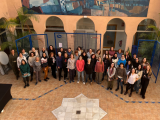
|
31/01/2024
Día Internacional de la Mujer y la Niña en la Ciencia 2024 El Instituto de Astrofísica de Andalucía se suma un año más a la celebración del Día Internacional de la Mujer y la Niña en la Ciencia, que tiene como objetivo visibilizar la labor científica de las mujeres y fomentar las vocaciones en las niñas |

|
27/02/2024 - 12:30
Unraveling the Gamma-ray emission in radiogalaxies and their jets Radio-galaxies are a minority among all extragalactic sources detected in gamma-rays, yet they have excellent potential to study particle acceleration and non-thermal emission in AGN jets. In contrast with blazars, which have jets aligned with the line-of-sight, radio-galaxies have a smaller Doppler boosting factors. The implications are important: First, the distance at which they are detectable in gamma-rays is smaller. Second, the thermal... Mireia Nievas Rosillo |

|
24/01/2024 - 24/01/2024
https://www.iaa.csic.es/meetings/cosmic-dust-workshop Granada |

|
21/05/2024 - 12:30
Coloquio SO: Spectroscopy's Role in Stellar Astrophysics To characterize a star, the stellar fundamental parameters such as mass, radius, metal abundance, and effective temperature should be known. Direct measurements of these parameters, especially for single stars, are quite challenging, and indirect methods are often employed to obtain these characteristics. The most effective method for determining these parameters is spectroscopy, which is an analysis technique of spectra. It allows us to... Dr. Filiz Kahraman Aliçavuş |

|
09/04/2024 - 12:30
Laboratory Research on the Atmospheric Impact of Spacecraft Re-entry Debris: Perspectives and Future Challenges The rapid growth of space debris, especially in Low Earth Orbit (LEO), poses a rising risk to both space operations and Earth's atmosphere. Debris fragments, even minuscule in size, can cause significant damage due to their high orbital speeds. To mitigate risks, controlled re-entry of debris is common practice, but this introduces a new concern: the increasing mass of human-made materials injected into the atmosphere. As satellites and rocket... Dr. Antonio Ocaña |

|
07/03/2024 - 12:30
SO colloquium: Stars and their close-by planets: clues of magnetic interactions Stars interact with their close-in planets through the gravitational and magnetic fields and with their radiation. After a general introduction to those interactions, I shall review some observational clues of magnetic star-planet interactions considering data obtained in the optical, X-ray, and radio domains. Based on a stellar force-free coronal field or the excitation of Alfven waves by an orbiting planet, some analytical models will be... Dr. Antonino Francesco Lanza |

|
21/03/2024 - 12:30
The Local Volume Mapper, state of the art The LVM, one of the three surveys that conform the SDSS-V project, is the first Integral Field Spectroscopy survey of the Local Group, including and unique mapping of the Milky Way. It started survey operations in October 2023, with some early science observations on cheery-peaked targets, and the first observations on the foreseen survey itself. I present here the status of the survey, including the state of the major contributions from the IA... Dr. Sebastián Sánchez |

|
14/03/2024 - 12:30
SO Colloquium: Spatially resolved spectroscopy properties of low-redshift galaxies We summarize here some of the results reviewed recently by Sanchez (2020) and Sanchez et al. (2021) comprising the advances in the comprehension of galaxies in the nearby universe based on integral field spectroscopic galaxy surveys. We review our current knowledge of the spatially resolved spectroscopic properties of low-redshift star-forming galaxies (and their retired counterparts) using results from the most recent optical integral field... Dr. Sebastián Sánchez |

|
19/02/2024 - 23/02/2024
https://indico.iaa.csic.es/event/11/ Granada |

|
19/03/2024 - 16:30
Recent Progress in Understanding Solar Flare Magnetism using Data-Driven Simulations and Statistical Analysis of Vector Magnetic Fields Continuous vector magnetic-field measurements by the Helioseismic and Magnetic Imager (HMI) onboard the Solar Dynamics Observatory (SDO) allowed us to run data-driven simulations of solar eruptions and perform statistical studies of magnetic-fields for many flares. In this talk I will review new aspects of flare magnetism discovered using SDO data, including progress in data-driven simulations and statistical studies of magnetic-reconnection... Dr. María Kazachenko |

|
07/05/2024 - 12:30
Journey into the Galactic Heart: Illuminating the Enigma of the Nuclear Star Cluster and the Nuclear Stellar Disc. The innermost regions of most galaxies are characterised by the presence of extremely dense nuclear star clusters, which sometimes appear together with larger stellar structures known as nuclear stellar discs. Understanding the relation between nuclear star clusters and nuclear stellar discs is challenging due to the large distance towards other galaxies which limits their analysis to integrated light. In this context, the Milky Way’s centre,... Francisco Nogueras Lara |

|
08/02/2024 - 12:30
The Transient High-Energy Sky and Early Universe Surveyor (THESEUS) The Transient HIgh-Energy Sky and Early Universe Surveyor (THESEUS) is a mission concept developed by a large European collaboration under study by ESA since 2018 and currently one of the three candidate M7 mission for a launch in mid '30s. THESEUS aims at fully exploiting Gamma-Ray Bursts for investigating the early Universe and as key phenomena for multi-messenger astrophysics. By providing an unprecedented combination of X-/gamma-ray... Dr. Lorenzo Amati |
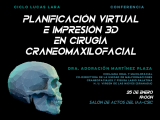
|
25/01/2024 - 19:00
Planificación virtual e impresión 3D en cirugía Craneomaxilofacial Cada año en todo el mundo muchos pacientes requieren reconstrucción quirúrgica de deformidades craneales y faciales adquiridas y congénitas. La reconstrucción de estos defectos son siempre un desafío para el cirujano debido a una anatomía compleja donde asientan funciones vitales, así como la apariencia facial. La cirugía craneomaxilofacial, en la última década, ha experimentado un profundo cambio conceptual en la planificación y en la mesa de... Adoración Martínez Plaza |

|
18/01/2024 - 12:30
A Year Beyond the Horizon: Advancing Our Understanding of M87* with New EHT Observations. In this presentation, we introduce the first follow-up Event Horizon Telescope (EHT) observations of M87*, taken a year after the epoch-making first image. The enhanced imaging, facilitated by additional antennas, increased data rates, and new imaging techniques, not only provides greater detail but also enables us to study the dynamics of the black hole within a year. Due to the embargo, specific results are not included in this abstract, but... IAA-CSIC EHT group |

|
03/10/2024 - 12:30
SO Colloquium: The next generation of milliarcsecond surveys with SKA-VLBI Very Long Baseline Interferometry (VLBI), using both SKA-Low and SKA-Mid, is poised to deliver groundbreaking observations with milliarcsecond resolution, surpassing the capabilities of the standard SKA array. VLBI in conjunction with the SKA holds the promise of unlocking profound insights across various astrophysical topics and science working groups. VLBI with the SKA stands to revolutionise our understanding of galaxy evolution and the... Dr. Jack Radcliffe |

|
15/04/2024 - 12:30
Astronomy with Neutrino Telescopes In recent decades, high-energy neutrinos of astrophysical origin have become integral members of the multi-messenger astronomy community. Neutrino telescopes have a very particular way to observe the sky, with characteristics different from any other telescope. They are capable of continuously observing the entire sky simultaneously, yet they also necessitate the accumulation of a significant amount of statistical data. IceCube reported the... Agustín Sánchez Losa |
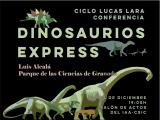
|
14/12/2023 - 19:00
Dinosaurios express ¡Todo el mundo sabe qué es un dinosaurio! ¿Seguro…? Bastantes animales son llamados dinosaurios sin serlo, mientras que hay dinosaurios que difícilmente se identificarían como tales Luis Alcalá |
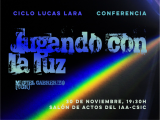
|
30/11/2023 - 19:30
Jugando con la luz Experimentos con luz, de la mano de Miguel Cabrerizo. Miguel Cabrerizo |

|
29/02/2024 - 12:30
SO Colloquium: Eyes on the Invisible: Charting New Horizons with the Event Horizon Telescope The Event Horizon Telescope (EHT) collaboration has captured the first-ever image of a black hole's event horizon in the galaxy M87, and more recently, in the supermassive black hole at the center of our Milky Way, SgrA*. These images, consistent with Kerr black holes as described by General Relativity, provide the strongest evidence to date for the existence of supermassive black holes in galaxy nuclei. Notably, the first polarization images of... Dr. Avery Broderick |

|
14/11/2023 - 15/11/2023
https://www.iaa.csic.es/noticias/meeting-light-pollution-challenges-and-response… Granada |
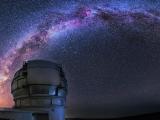
|
20/10/2023
Congreso para promover sinergias entre los grandes observatorios astronómicos españoles Primera reunión de los grandes observatorios astronómicos en territorio español. |

|
11/01/2024 - 12:30
MOSAIC: the high multiplex and multi-IFU spectrograph for the ELT MOSAIC is the planned multi-object spectrograph for the 39m Extremely Large Telescope (ELT). Conceived as a multi-purpose instrument, it offers both high multiplex and multi-IFU capabilities at a range of intermediate to high spectral resolving powers in the visible and the near-infrared. In this talk I will showcase the key science cases that drive the top-level requirements and the adopted instrument architecture. With a planned first light in... Dr Ruben Sanchez-Janssen |

|
24/10/2023 - 25/10/2023
https://www.iaa.csic.es/meetings/andes-technical-meeting Granada |
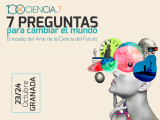
|
23/10/2023 - 24/10/2023
https://www.granadacongresos.com/100xciencia7 Granada |
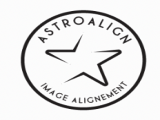
|
14/10/2023 - 14/10/2023
https://indico.iaa.csic.es/event/8/ On line |

|
25/01/2024 - 12:30
Stellar population studies in the J-PAS survey The Javalambre Physics of the Accelerating Universe Astrophysical Survey (J-PAS) is a large scale multi-filter survey that has started to observe 8500 deg² of the northern sky with 54 narrow-band filters in the optical range (3500-9600Å). In our Galaxy Evolution group at IAA-CSIC, we aimed at developing and testing methodologies in order to perform stellar populations studies using this kind of data. More precisely, I will introduce our SED-... Dr. Luis Alberto Díaz García |

|
19/12/2023 - 12:30
Fundamental Physics From Ground-Based Gamma-Rays Observations Crucial topics in fundamental physics, such as the existence of new particles, or violations of the Lorentz Invariance arising at the Planck scale, can be effectively tackled in the cosmic environment, by means of ground-based observations in the VHE gamma-ray band. This includes both Particle showers detectors, such as LHAASO and Imaging Atmospheric Cherenkov Telescopes, such as MAGIC, H.E.S.S., or the forthcoming CTA and ASTRI Mini-Array. I... Dr. Giacomo Bonnoli |
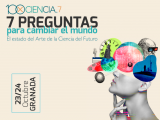
|
16/10/2023
¡100xCiencia.7 ya está aquí! El Parque de las Ciencias de Granada acogerá el 23 y 24 de octubre la séptima edición de 100xCiencia, el encuentro anual de la alianza SOMMa que reunirá a la comunidad científica de los Centros de Excelencia Severo Ochoa y Unidades de Excelencia María de Maeztu. 100xCiencia.7 está coorganizado por SOMMa junto a los anfitriones de este año: el Instituto de Astrofísica de Andalucía (IAA-CSIC) y el Instituto de... |

|
02/11/2023
Meeting on Light Pollution: Challenges and Responses for Monitoring it Light pollution has a direct impact on the environment, on astronomical observations and on the starry sky as a heritage resource of humanity. Excessive light confuses the biological clocks of humans, animals and plants with its spectral composition similar to daylight. As a result, it makes it difficult to distinguish between day and night and between the seasons to which living organisms are physiologically attuned. Light pollution is... |

|
02/10/2023 - 02/10/2023
https://indico.iaa.csic.es/event/7/ Granada |

|
16/01/2024 - 12:30
UGR bureocrazy for dummies: PhDs fight back Every year we all wonder about the UGR bureaucracy: did we miss something? how could we have known in advance? Let's face it, it's a mess. To try to help us all, especially those who are just starting, I would like to invite everyone interested to a seminar dedicated to understanding what the PhDs have to go through every year (paperwork related), where to find the proper information, who to contact in case of doubt and how to go through the PhD... Teresa Toscano |
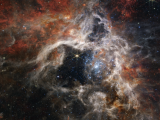
|
27/11/2023 - 01/12/2023
https://www.granadacongresos.com/starform2023 Granada |
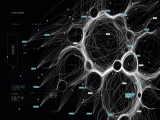
|
16/11/2023 - 17/11/2023
https://indico.iaa.csic.es/event/4/ Granada |

|
31/10/2023 - 12:30
Outflows from low to high luminous AGNs Outflows are believed to play a major role in the evolution of galaxies and are said to be ubiquitous within the active galactic nuclei (AGN) population. However, we still lack a comprehensive view of their properties and impact in their host galaxies and the surrounding medium. If we focus on the low luminosity part of the AGN family, in particular in low ionisation nuclear emission-line regions (LINERs), the impact of outflows is still largely... Laura Hermosa Muñoz |

|
03/10/2023 - 12:30
Young massive clusters in the Gaia era After the detection of gravitational waves and the realisation of the wide diversity among core-collapse supernova explosions, Interest in massive stars has been rekindled. Young open clusters are our natural laboratories to explore the lives and deaths of massive stars, and most of our current understanding comes from their study. Until recently, we have been strongly limited by practical difficulties and small number statistics. Most open... Dr. Ignacio Negueruela |
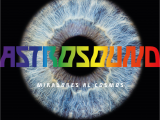
|
15/09/2023
ASTROSOUND II: Miradores al Cosmos El Instituto de Astrofísica de Andalucía (IAA-CSIC), en colaboración con el Festival Granada Sound y el Ayuntamiento de Granada, recibirá a los “granasounders” con una gran exposición digital en una pantalla LED gigante junto a las casetas de acreditaciones del festival, que este año estarán situadas en la Fuente de las Granadas. |

|
26/09/2023 - 12:30
Coloquio SO: Extracting stellar populations and (mainly) emission line information out of S-PLUS photometry We present tests of a new method to simultaneously estimate stellar population and emission line (EL) properties of galaxies out of S-PLUS photometry. The technique uses the AlStar code, updated with an empirical prior which greatly improves its ability to estimate ELs using only the survey's 12 bands. The tests compare the output of (noise-perturbed) synthetic photometry of SDSS galaxies to properties derived from previous (STARLIGHT-based)... Dr. Roberto Cid Fernandes |

|
30/11/2023 - 12:30
SO Colloquium: Studying star-formation in 'collisional' galaxies with MUSE Galaxies in pre- and post-collisional stages are an excellent laboratory to study the evolution of galaxies, particularly the triggering and suppression of star formation on galactic scales before and after such interactions. In order to analyze the star formation triggered in these systems, we started a series of studies on 'collisional' galaxies with available integral field spectroscopy (IFS) observations. We use Very Large Telescope (VLT)... Dr. Victor Mauricio A. Gómez González |

|
21/09/2023 - 12:30
SO Colloquium: Testing black hole structure with very-long-baseline interferometry Black holes hold a tremendous discovery potential, and experiments such as the Event Horizon Telescope and its next generation upgrade could provide important cues about their structure. New physics beyond general relativity can modify the structure of black holes and leave imprints on image features, for instance changing the separation between photon rings or generating additional sets of photon rings. Both cases motivate the study of the... Dr. Raul Carballo |